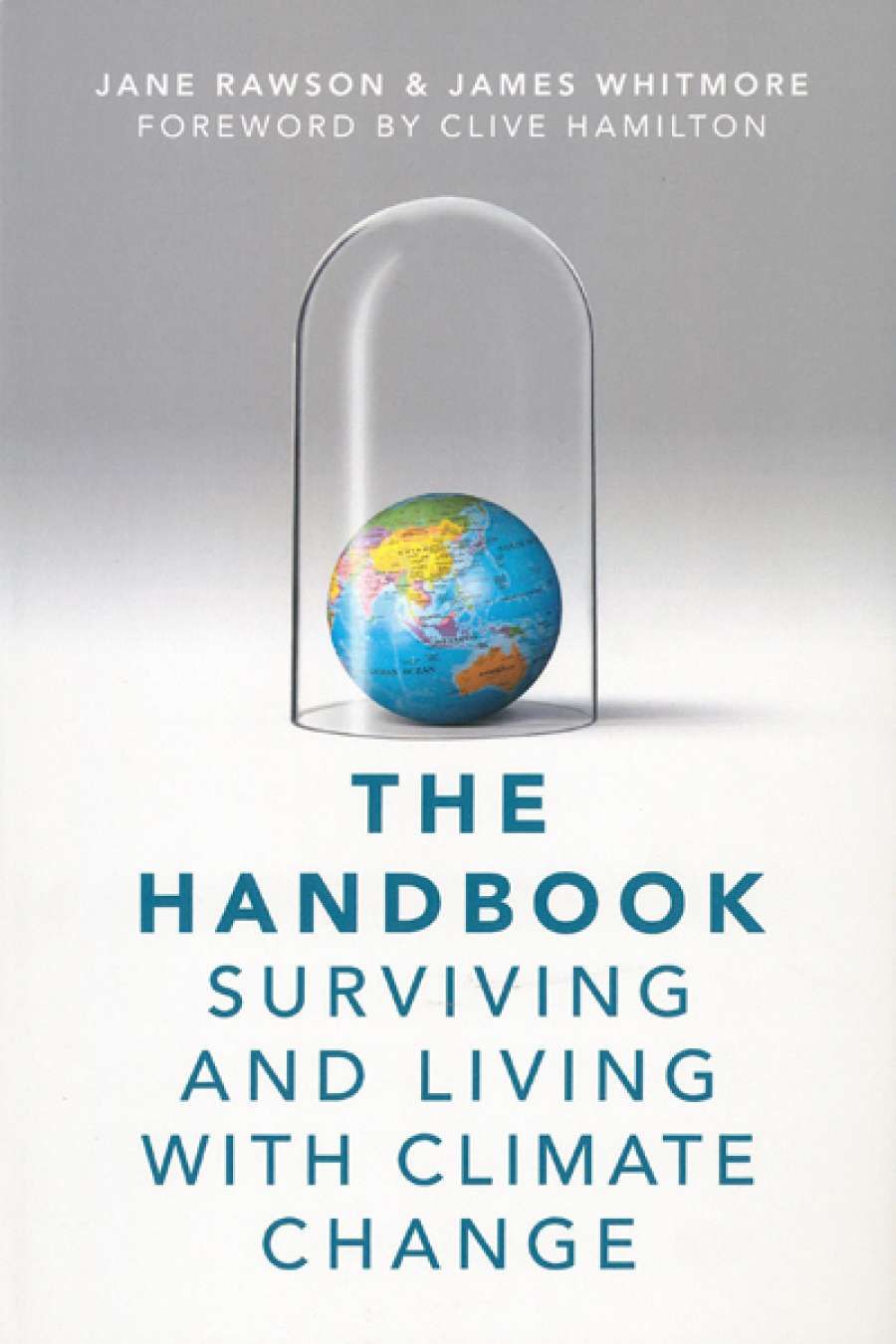
- Free Article: No
- Contents Category: Climate Change
- Custom Article Title: Ruth A. Morgan reviews 'The Handbook' by Jane Rawson and James Whitmore
- Book 1 Title: The Handbook
- Book 1 Subtitle: Surviving and living with climate change
- Book 1 Biblio: Transit Lounge Publishing, $29.95 pb, 320 pp, 9781921924934
In their Handbook, Rawson and Whitmore offer a common-sense guide for what concerned Australians can do to empower themselves. That the book is written explicitly for Australians and Australian conditions is significant – climate change is set to affect different places in different ways; what might work for some places will not necessarily work for others. Moreover, the emphasis on Australian conditions localises the climate change challenge from an intangible global scale to the more familiar – where we live. The Handbook’s appeal to immediacy is not only spatial, but also temporal, emphasising the need to prepare, to act, rather than wait for catastrophe.
Climate change, the authors explain, is a kind of slow disaster, creeping along in the background, and increasing the frequency and severity of weather events. In a continent of extremes, the authors haven’t had to look far for examples: the Canberra bushfires, Black Saturday, and the Queensland floods all feature as case studies for helping us to understand how climate change Australia might look. Knowing how people responded to these disasters in the past provides valuable insight into the kinds of adaptation necessary to survive and live with climate change in the future.
Rawson and Whitmore have drawn together the latest research on building resilience and disaster preparedness, from psychology, nutrition, and insurance to retrofitting, gardening, and personal accounts of disaster. Their recommendations are comprehensive and leave little to the imagination. Relocating, reskilling, and renewables are all given careful consideration, as are self-reliance and community building. The recommendations are nothing short of overwhelming, and reveal the enormous challenges that Australia faces in a warming world.
 Flooding in Ipswich, Queensland, 13 January 2011 (photograph by Jim, via Wikimedia Commons)
Flooding in Ipswich, Queensland, 13 January 2011 (photograph by Jim, via Wikimedia Commons)
‘The scenarios are alarming: Australia will be hotter, drier in some parts, wetter in others, with more frequent bushfires, floods, and heatwaves’
It is one thing to acknowledge that climate change will affect our way of life, but it is another to read, in painstaking detail, what that might really mean. For households, it means living with less, recycling, and becoming more self-sufficient in terms of food, water, and energy. For the nation, it means rethinking our cities, infrastructure, food production, water supplies, energy, utilities, public services, and the ways we are governed. It also means helping those who can’t help themselves, for they will bear the brunt of the vast environmental and economic changes that lie in wait for Australia.
Rethinking our homes and our communities is not enough; we also need to prepare ourselves mentally and emotionally. After all, the authors warn, when it comes to preparing for climate change, ‘the biggest challenge you face is your mind’. Of all the emotions associated with anthropogenic climate change, denial is perhaps the most familiar but the least constructive when it comes to ensuring your survival. There are all kinds of confusing thoughts and feelings that may arise from living with climate change: trauma, grief, distress, anxiety, guilt, and despair, to name a few. Then there is the sense of loss that comes with changes to your home, to where you live; a kind of physical and emotional displacement called ‘solastalgia’. These diagnoses are no exaggeration – they are drawn from the careful study of how Australians have dealt with natural disasters in the past and are intended to alert us to the personal implications of a changing climate.
As very few of us will be able to relocate to the refuges of Tasmania or the South Island of New Zealand, we would do well to take heed of the advice in this Handbook. Whether it is preparing an evacuation kit, growing your own veggies, or learning first aid, some action is better than none. Living in an Australia that is ‘open for business’, can we afford not to?


Comments powered by CComment